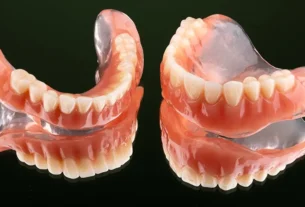Fossils discovered more than a century ago in Ireland were likely deformed by superheated fluids around 300 million years ago. These fluids are believed to have been released when Earth’s ancient continents collided to form Pangea. Details of the study are published in the journal Paleontology.
Strange ‘dragon’ fossils
These 320-million-year-old fossils (Carboniferous era) are essentially made up of a group of amphibian-like tetrapod creatures of the genus Keraterpeton. Discovered in 1866 at a fossil site in County Kilkenny, southern Ireland, these animals that could have fit in the palm of your hand looked like salamanders with pointed horns.
Somewhat oddly, all of these remains have visibly been deformed, while large sections of them have been replaced by surrounding charcoal. The fossils also contain an unusually high amount of apatite crystals or phosphate minerals. They are found in the bones of most animals, as well as in many volcanic rocks.
To explain all these features, it was long thought that these fossils were buried in acidic soil. This soil would then have dissolved most of the bones and allowed charcoal to take their place. A new study challenges that assumption. After analysis, it would indeed seem that the apatite in the bones was probably formed twenty million years after the death of these creatures. This observation therefore implies another explanation.
Formation of Pangea
The Earth’s crust and upper mantle form tectonic plates that float on top of the molten rock of the middle mantle. Over the past billion years, the continents have been moved around the world according to the movements of the tectonic plates which slide, crash or overlap each other. Here, the formation of apatite seems to correspond with the formation of the last supercontinent on Earth: the famous Pangea.
More specifically, the researchers believe that the apatite in the fossils likely came from superheated fluids that were released during this process.
“When these continents collided, they formed mountain belts with superheated underground fluids flowing out of them,” says Aodhán Ó Gogáin, of University College Dublin. “It was these superheated fluids, which circulated throughout Ireland, that cooked and melted the bones of these fossils causing the weathering we see today.”
The team, which has finally settled the question of the origin of these “Irish dragon” fossils, hopes that these discoveries can also be used to learn more about the formation of Pangea.



